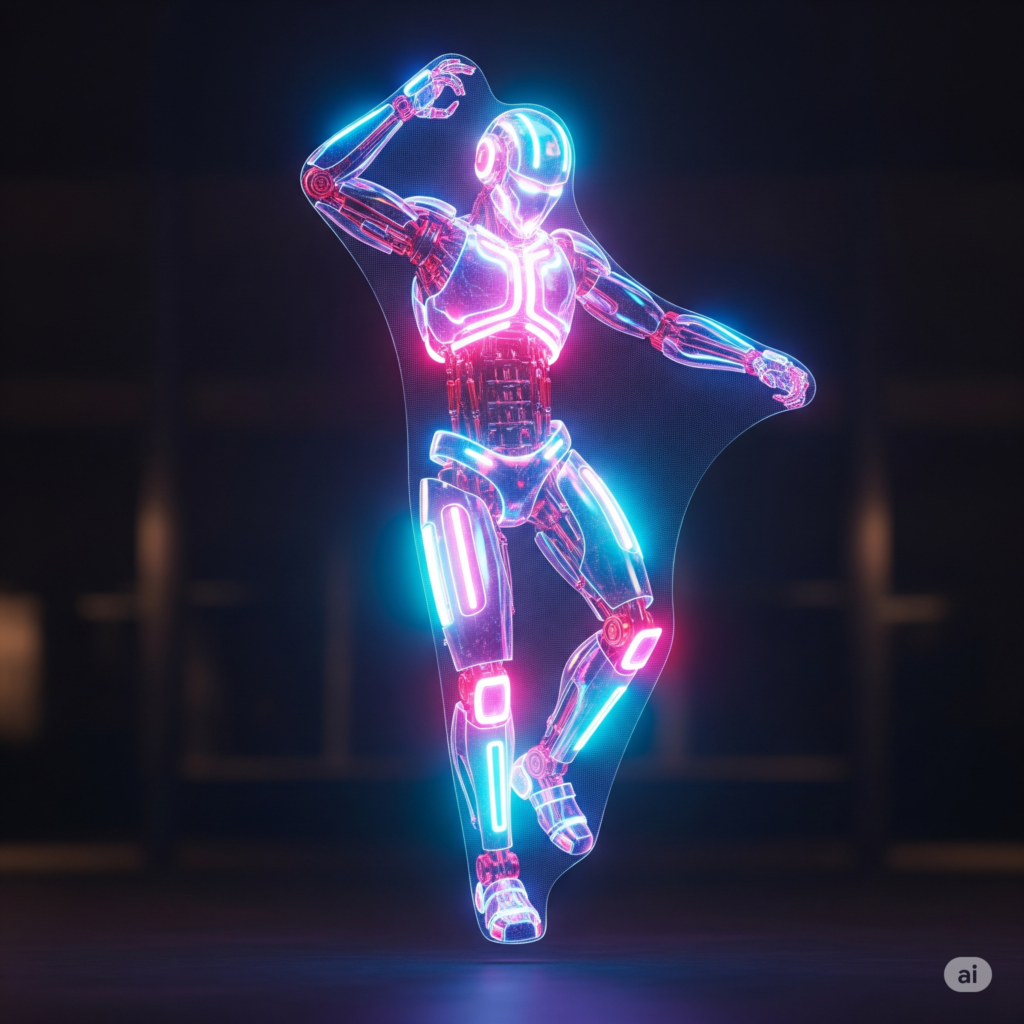
What Is a Hologram Video?
A hologram video creates the illusion of a 3D object floating in space, often without the need for glasses or headsets. While the term is sometimes used loosely to describe 3D visuals, true holography involves capturing and reconstructing the light field of an object so that it looks and behaves like the real thing when viewed from different angles.

Create hologram from your phone- hologram projector
🔬 How Real Holograms Work
True holography is based on wave interference. Unlike a regular photo that records brightness, a hologram records both amplitude and phase of light—capturing how light waves travel. This allows it to reconstruct the full 3D light field of an object.
Basic Steps of Holography:
- Laser Light is split into two beams: a reference beam and an object beam.
- The object beam reflects off the object and hits a light-sensitive plate.
- The reference beam bypasses the object and also hits the plate.
- The two beams interfere with each other, encoding 3D information into a pattern.
- The pattern is developed and used to recreate the light field, producing a 3D image.
🎬 How Hologram Videos Are Made (Dynamic Holography)
A hologram video is like a movie made of changing holographic frames. Creating these in real-time is very complex.
Requirements for Real Holographic Videos:
- High-speed cameras to capture moving objects.
- 3D scanning systems to record light phase and direction.
- Powerful computing to process huge data streams.
- Spatial light modulators (SLMs) to project changing interference patterns.
This field is still in development, with major work being done in medical imaging, military communication, and scientific visualization.
🧠 Why Holograms Look So Real
Holograms create a convincing illusion because they mimic how we naturally see the world:
| Realism Factor | Explanation |
|---|---|
| Motion Parallax | As your head moves, the image shifts like a real 3D object. |
| Stereoscopy | Each eye sees a slightly different angle, creating natural depth. |
| Light Field Display | The image is built from light waves just like real objects. |
| No Glasses Needed | You see it with the naked eye, increasing realism. |

Create hologram from your phone- hologram projector
🧪 Types of Holographic Displays (Most Common)
1. Pepper’s Ghost Illusion
- Uses angled glass or transparent film.
- Projects 2D content that looks 3D.
- Used in concerts (e.g., Tupac at Coachella).
2. Holographic LED Fan
- Spinning LED blades create a floating 3D illusion.
- Popular in retail displays.
- Doesn’t use interference—just persistence of vision.
3. Volumetric Displays
- Projects multiple 2D layers in 3D space.
- Can be viewed from different angles.
- Still not wave-based holography.
4. Holographic Screens
- Screens reflect projected images with 3D effects.
- Some use lenticular lenses or light field tricks.
- Common in digital signage and AR displays.
💡 How to Make a Simple Static Hologram at Home
Required Materials:
- Red laser pointer (5mW)
- Beam splitter (half-silvered mirror)
- Front-surface mirrors
- Holographic film or plates
- Optical table (anti-vibration surface)
- Object (e.g., a coin or small figurine)
- Developer and bleach chemicals
Steps:
- Align mirrors to split the laser into object and reference beams.
- Direct object beam to the subject; reflect the reference beam to the plate.
- Let both beams interfere on the film.
- Develop the film using chemicals.
- Re-illuminate the plate with the laser to see the 3D image.

Create hologram from your phone- hologram projector
🧰 Software Tools for Holographic Content
If you’re not using lasers but want to create digital hologram-like videos, here are software tools you can use:
| Purpose | Tools You Can Use |
|---|---|
| 3D Modeling | Blender, Maya, 3ds Max, SketchUp |
| Animation | Adobe After Effects, Unity, Unreal Engine |
| Hologram Fans Output | Holofx, HoloStudio, Fan editing software |
| Volumetric Capture | Depthkit, Microsoft Mixed Reality Capture |
| Light Field Simulation | Light Field Toolbox (MATLAB), OpticStudio |
These tools help simulate holograms or prepare videos for projection on fan displays, AR devices, or transparent screens.
📦 Real-World Applications of Hologram Technology
| Field | Use Case Example |
|---|---|
| Education | Interactive 3D anatomy lessons |
| Medicine | Holographic CT scan visualization |
| Entertainment | Live hologram concerts, AR storytelling |
| Retail | Eye-catching product showcases |
| Security | Anti-counterfeit labels on currency and ID cards |
| Telepresence | Realistic 3D video calls for business or remote work |
✅ Summary
| Feature | True Holography | Most “Hologram” Displays |
|---|---|---|
| 3D Without Glasses | ✅ | ✅ |
| Real Light Field | ✅ | ❌ |
| Uses Interference | ✅ | ❌ |
| Can Be Viewed from Any Angle | ✅ | ⚠️ (Limited angles) |
| Easily DIY | ❌ | ✅ (Basic versions) |

Create hologram from your phone- hologram projector
Final Thought
True holograms are still a frontier of science, but with creative tools and clever projections, it’s already possible to build immersive 3D illusions that feel like magic. Whether you’re a creator or just curious, holographic tech is unlocking a new way of seeing, learning, and experiencing the world.
✅ Affiliate Disclosure
Disclosure: This post may contain affiliate links. If you click through and make a purchase, I may earn a small commission at no extra cost to you. This helps support the site and allows me to continue creating helpful content. Thank you for your support!
👤 About Me:
Hi, I’m Sujith — a content creator, digital marketer, and tech enthusiast with a passion for explaining complex topics in simple ways. With hands-on experience in AI, video creation tools, and 3D visualization, I create guides and reviews to help creators and learners make smarter choices. Whether it’s understanding holograms or finding the right gear, I test it so you don’t have to.